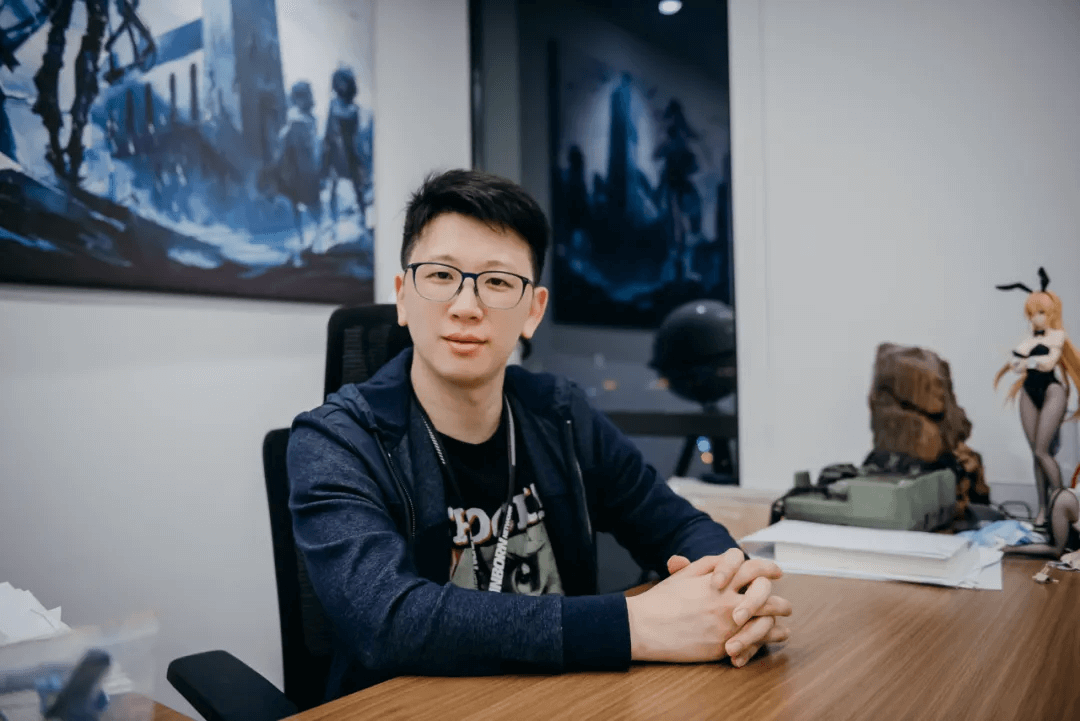This is a translation of the September 16th, 2021 Weixin Interview with Yuzhong. [Original Source]
Overview
About 5 to 6 years ago, when ACG games weren’t as popular as they are now, several development teams took their first steps into this realm. Most of them were friends from doujin circles who had collaborated on certain works. They had dreams, they had capital, and their passion drove them to make something. This was the era in which Girls’ Frontline was born.
While Girls’ Frontline enjoyed blazing popularity for a while in 2016, perhaps it is no longer able to satisfy the increasingly-growing demands of players on the current mobile game market. Therefore, Sunborn decided to set out and reignite the expectations of their players, announcing that they would release four mobile games based on the GF IP. This daring move, nicknamed “four from one”, immediately became the talk of the industry.
After that, these games gradually came into public view. Girls’ Frontline: Project Neural Cloud (abbreviated to PNC from now on) is a rogue-like deck-based game revolving around functions that is eagerly anticipated by many. PNC’s first paid beta ended on July 17th, and an open beta has been slated to go online on September 23rd.
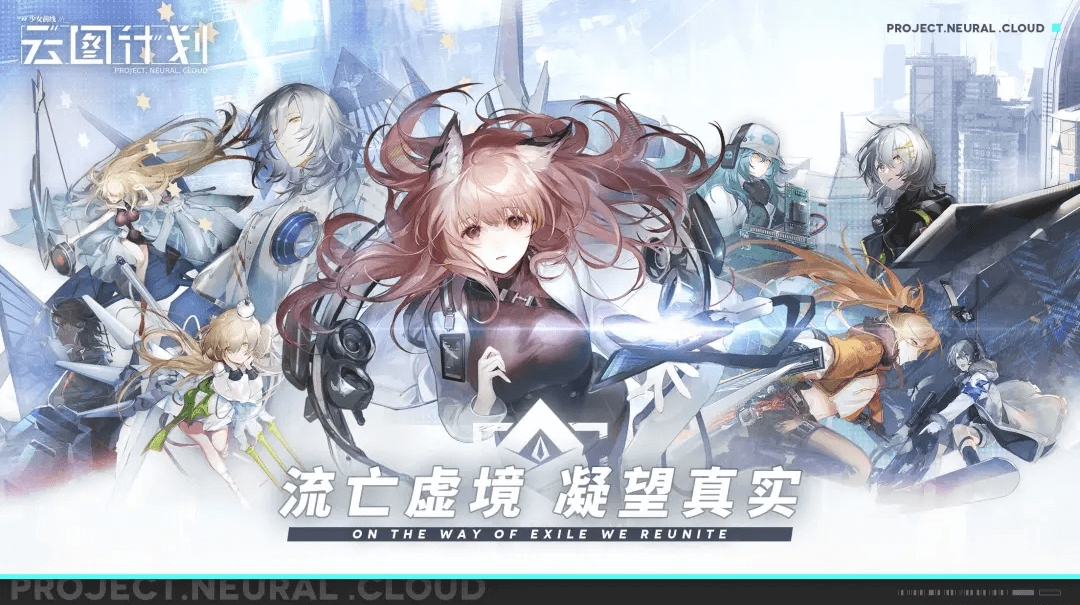
Meanwhile, the turn-based strategy game Girls’ Frontline 2: Exilium (abbreviated to GF2 from now on) had its first beta on June 29th and currently has a score of 9.0 on Taptap, with over 820k preregistrations. GF2’s character models and photorealistic 3D-rendered backdrops are overwhelmingly superior to its contemporaries that are in beta right now. One can practically smell the money burning as it is shoveled into the engines of creation.

To a certain extent, this confidence is due to the intervention of Tencent. On April 21st of this year, Sunborn Network Technologies effected a change in share ownership and Tencent now owns a 20% stake in the company. While this is quite exceptional to my limited knowledge of mobile game affairs, both sides only took 25 days to go from initial talks to the final settlement.
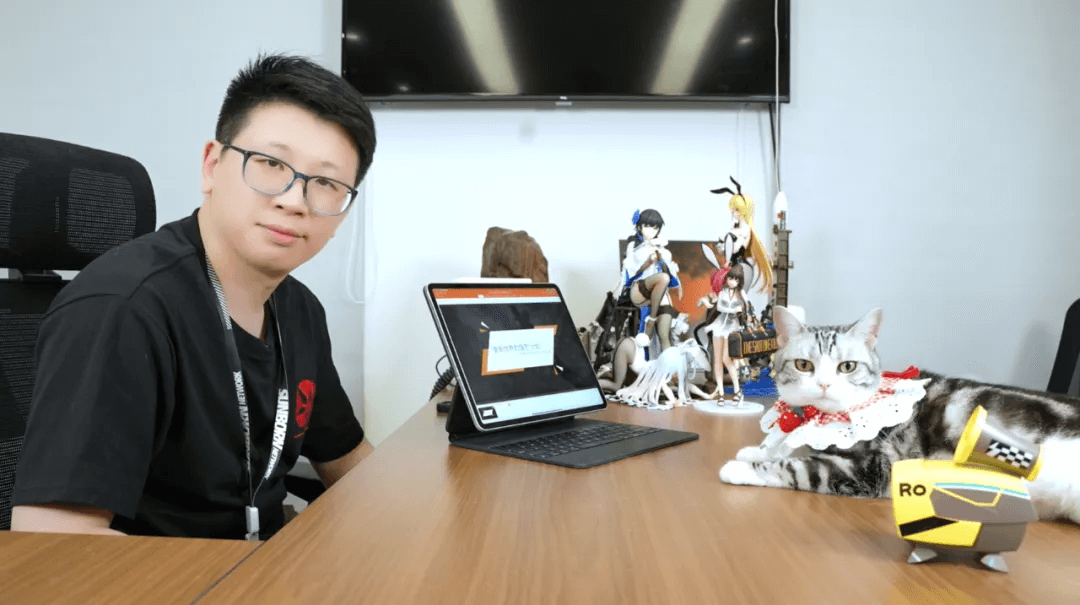
The CEO of Sunborn, Yuzhong
But what does Sunborn have in store? How did this nearly 500-strong production team come to be? What kind of deal was made between Tencent and Sunborn? How will they revolutionize the ACG market? We had a chat with Sunborn’s CEO Yuzhong a while back about the story behind all this.
What follows is a more concrete account of our interview with him, edited for a better reading experience.
1: Four From One With The GF IP, Simultaneously Developing Four Games
Something About Mobile Games (SAMG): Last year, everyone was very shocked to hear Sunborn announce that they would be releasing 4 games at once. Why did you go with the “four from one” development simultaneous development model?
Yuzhong (YZ): One part of it is because I consider us to be making an IP, and IPs need to be supported by many products and a lot of content. Nobody would believe us if we said we were making an IP and only had one game. Therefore, we felt that we needed more content so everyone could understand the breadth and expandability of the Girls’ Frontline universe.

The Girls' Frontline Product Line
YZ: The other part is because our team has a strong desire to create and they want to make different kinds of games. Before this, we had four game projects in the works within the team. We gave them all a spin and felt that they all worked well and we couldn’t really bring ourselves to abandon any of them, so after thinking about the team’s condition and doing some calculations, we found that we could support all of them. In that case, why not work on all of them? That’s why we’re pushing four projects at once.
SAMG: What would you say is the hardest thing about developing four games at once?
YZ: It’s mainly experience. At a basic level, everyone is working on their own projects and everyone has a job of their own, so we don’t really affect each other. But as you go further up, the more demanding things become on our management abilities. For instance, we need to manage the team as a whole, each individual project and the cash flow for each of them which is a very complicated math problem. Then we need to think about how to allocate everyone between the various projects to help each project perform better, which is another math problem of its own.
Also, the development process for each game isn’t the same. What are the best methods to use for each game? The truth is, nobody knows. For example, PNC is a medium-scale project, GF2 is a big project, so we wouldn’t be able to finish PNC if we applied GF2’s methods to it, and similarly applying PNC’s methods to GF2 would lead to a massive productivity shortfall. All this is an unprecedented challenge to the core developers and management personnel.
SAMG: If you could go back and redo all these projects, what would you choose to focus on?
YZ: I would focus more on uniqueness. If we’re making a new work, then I’d like it to be something one-of-a-kind on the market. Of course, that’s a double-edged sword; unique works are more interesting but more difficult to produce. There are no references we can use and you pretty much have to learn everything the hard way. Still, we don’t really want to do things which others have already done. That would be boring and wouldn’t mesh with our values.
SAMG: A lot of middle to large companies are doing open-world games. What do you think about them?
YZ: I’m not saying that sandbox or open-world games are bad, because the concept of an open world is very broad and there is nothing wrong with having a large game world. However, I think it’s pointless to just go with the flow because that’s what they’re doing on the market. If we were to make a sandbox game, it would be a sandbox mode that would be uniquely ours and not something that somebody else has already done.
2: Mutual Trust Secured Tencent’s Hundred-Million Investment in 25 Days
SAMG: You received an investment from Tencent recently. Why did you seek an investment from them at this juncture?
YZ: Part of it was because the deal would help the team to develop. Another part was because there were no strings attached to this deal. That was what we were focused on. We did not want external interference with us, and if there was, we would rather have rejected the investment.
SAMG: Is it true that this is their biggest ever investment in an ACG company? Would you mind telling us roughly how much they put in?
YZ: Yes, you can say that. I won’t reveal the exact amount, but there were 9 0s in it.
SAMG: What do you think has been the biggest change for you now that Tencent holds a 20% stake in the company?
YZ: I would say that the biggest change is that our development for everything has immediately kicked into overdrive. Our entire strategic plan has changed after getting that cash infusion. Taking GF2 for example, our original plan would have had us releasing in 2021 in order to ensure adequate resources, but with Tencent’s investment, we decided to give our project teams more time to develop and polish their products better before putting them on the market. You could say that Tencent’s investment helped ease our worries over the future.
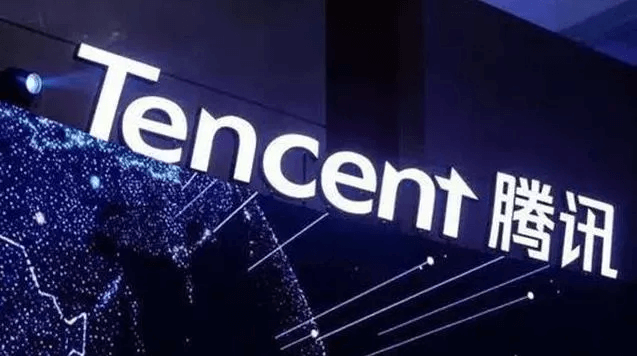
SAMG: You said that the company could now do more of the things they wanted to do. What exactly are these things?
YZ: We’re going to create more content that spans different fields. For example, at first we had to outsource our animations, but now that we have adequate manpower, we have the luxury of forming an internal animation team. So future game trailers and movies can be made with our internal team. Since we’re looking at making a GF IP, the amount of resources and funding needed are quite significant.
Also, we will continue with our strategy of pursuing multiple. The “four from one” plan we went with previously was based on the pretext of a stable income supply and the team being able to support it, but the fact is that our funds and manpower back then were limited, so we had to work smart to make up for our deficiencies. But after Tencent’s investment and as our future projects start coming online, we can accelerate the implementation of many plans and ideas, we can produce things more efficiently and greatly improve the quality of our games. If investing sufficient money in a game could make it better, then we would do so without any hesitation.
SAMG: So will Tencent be handling product distribution or part of the management?
YZ: We will be self-publishing.
SAMG: What left the deepest impression on your during your negotiations with Tencent?
YZ: That would probably be how they managed to settle such a big case in just 25 days. When they contacted us around March, we expected that it would take until the latter half of the year to take care of things, but in the end it was done by April, much more quickly than we expected. They have a very strong team, and the negotiations were smooth and enjoyable, and they didn’t make any demands regarding our management or our performance.
SAMG: You gave out a 2-month bonus after getting the investment from Tencent. What do the people in your company think of all this?
YZ: Of course everyone was pretty happy about the bonus, and naturally everyone was concerned about whether Tencent would try to take a controlling share of the stock, or interfere with game development, or if they would want to take over publishing. We explained internally that this was nothing more that a tactical investment and that it would not affect company policy. Everyone could also feel the company picking up the pace, so on the whole, everyone approved of the deal.
SAMG: I’ve always been curious about something. Sunborn has always given the impression of being very low-key, but then you suddenly released a lot of news at once, such as developing 4 games at once, hosting a massive carnival, getting the Tencent investment and so on. Why did you suddenly decide to declare your presence to the world?
YZ: That was actually part of our plan. Before this, we felt that we ought to carefully polish our products and put our effort into doing what we ought to do. The four games were essentially on track by the time we announced them, so at that stage we felt that we needed to let the world know we were building up to something. We couldn’t just do it and be done with it. What’s that saying… “If you’ve got it, flaunt it?” Competition on the market now is really intense, so we can’t just develop a game, we also need to carefully handle each step and component of publishing and marketing too.
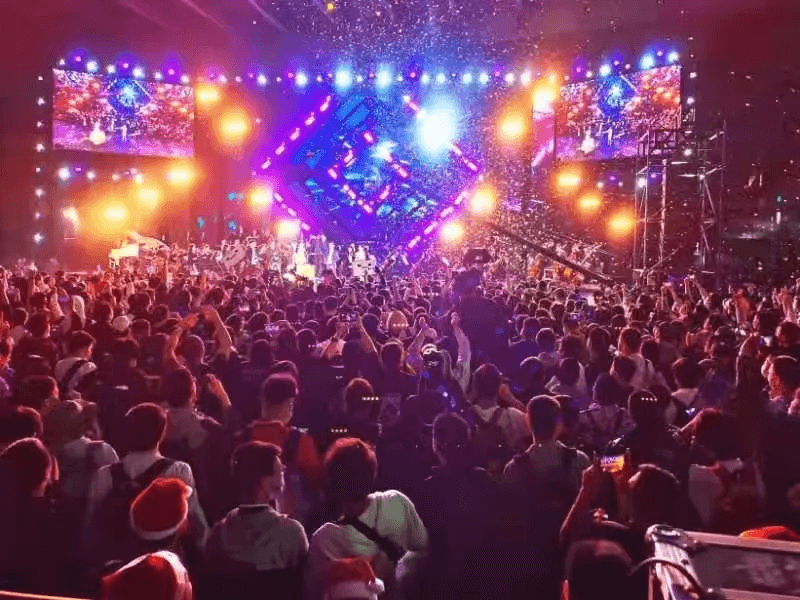
Sunborn's 5th Anniversary Carnival
3: Sunborn Went From A Doujin Circle To 450 People, Yuzhong Went From A Game Producer To A CEO
SAMG: The number of people at Sunborn has doubled from what it was in 2019. Roughly how many people do you have now?
YZ: We’re constantly expanding and have 450+ people now. All positions are recruiting, but we’re mainly looking for various technical talents for new projects. Competition for people in the industry is very fierce and we have to ensure that we have a constant supply of good talent. Our biggest project group now is for GF2, which has nearly 200 people.

SAMG: Right now, how large do you expect Sunborn to become?
YZ: We have way too many things we want to do, there’s practically no end to it, and our only solution is to add people to solve that problem. I think we could stand to double our numbers again. If we did, we’d have around 800 people. Take a look at Mihoyo's Genshin Impact, they’ve got 800+ people working on the game. Sunborn actually has a lot of room and demand for people, so we really need talent.
SAMG: In addition to its headcount, how do you think Sunborn has grown most over the past few years?
YZ: Frankly speaking, the biggest flaw in ACG teams is that everyone is bad at communicating with each other, and in the past communication was heavily influenced by the era. But as everyone’s gotten older and more mature, we’ve become better able to understand others and our communication skills have greatly improved. A good team doesn’t just have top-notch technical skills; being united and supporting each other are also key points in whether or not a project can be successfully launched. A group can be very powerful when they work together.
SAMG: What about yourself? What is the biggest challenge you’ve faced when going from just 1-200 people a couple of years ago to having a team of 450 people now?
YZ: It’s way harder. You need to establish a distinct organizational structure and clearly arrange a path to improvement for everyone — At the most basic level, you need to make sure each employee has a path for improvement; and at the middle management level you need to be aware of how each project and department is structured and ensure duties are clearly and evenly divided, and as you go higher, when you lead such a big company, you need to think about how you will progress in 3, 5, maybe even 10 years in the future.
SAMG: How did you go from a project lead to a CEO? Could you share your experiences with us?
YZ: It was actually a pretty painful process. A CEO needs to have a broad perspective. For instance, they need to think about when a product will go online, how much of it will we be pushing, how much income do we expect to make, how many users we expect to have, and other such questions. However, being a developer requires a narrow focus. Apart from the first one or two months of making a gameplay demo when you can afford to set your sights wider, at all other times they need to have a keen grasp of the details at all times so they can eventually produce a well-coordinated work.
The requirements for each position are markedly different, so we ended up establishing the position of executive producer. Later on, I will share my ideas and experience with these executive producers and they will handle the fine details. As a CEO and the overall project coordinator, I need to have a wider scope in order to help everyone solve their problems.
SAMG: How long did it take for you to switch from one role to another?
YZ: A year or two, I think? I wouldn’t say I didn’t want to switch, but I was so busy with game development that I couldn’t take my hands off it. So all I can do now is switch from one mode to another as quickly as I can. When I need to manage the game, I switch to producer mode. When I need to manage the company, I switch to CEO mode.
4: Making ACG Games In Shanghai, Making 3D Games In The Future
SAMG: The problem of burnout in Shanghai is pretty severe and everyone is looking for a way to encourage and give incentives to their talent. What does Sunborn do or think about this?
YZ: Oh, we do what the other companies do, such as paying out project bonuses or offering option incentives. In general, we do what we ought to do. Right now, we’re working on offering a top-down incentive scheme so everyone can enjoy the dividends of the projects they’re working on.
SAMG: Has this wave of burnout affected you?
YZ: Oh yes, it’s become hard to hire people, everyone’s fighting for new recruits. We’ve adopted the appropriate countermeasures, of course. On the one hand, we’re counting on our projects to draw people in, and on the other we’re also need to make sure the salaries we’re paying out are at the upper end of the scale even if the starting salary on the market now has doubled. We do live in the real world, after all.
SAMG: What do you think of Shanghai as a developmental environment? Some people say it’s a double-edged sword; talent definitely abounds, but competition for it is very fierce.
YZ: It’s definitely a double-edged sword, and it’s got a bad effect on companies which aren’t at the top of their game, because your team will never be stable. But if your company is competitive, then it’s good news for your recruitment departments, because you’ll be able to attract talents through many channels and taking them in will be easy.
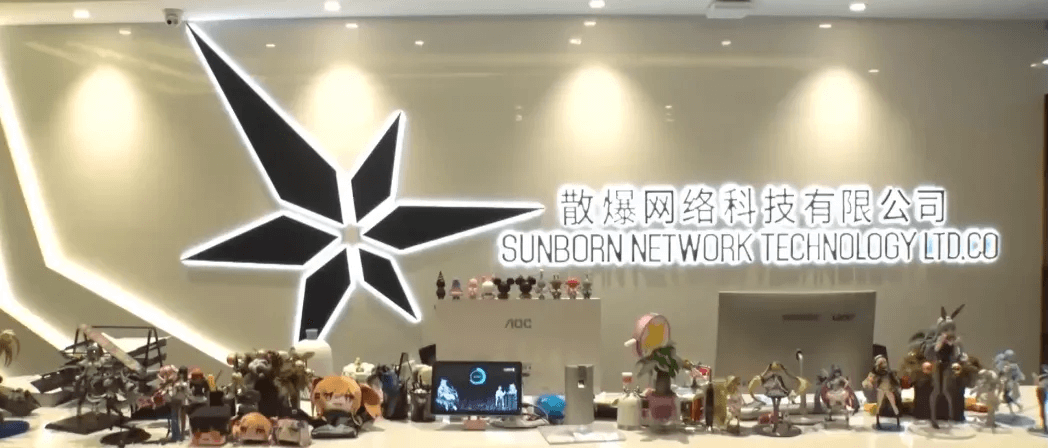
SAMG: How much does it cost for your to develop a game now?
YZ: We usually propose a ballpark estimate beforehand, but in general we always overrun our costs. For instance, we were planning to keep costs in the 8-figure range but in the end it easily exceeded 100 million. Since we’re not very experienced, we don’t know how much a big project will cost before we start it. I mean, it’s not like we can go running to another company with a big project of their own and ask how much they’re spending on it for our reference, right? So all we can do is use external data and estimate things.
SAMG: What do you think of the trends in the ACG market?
YZ: I feel that those companies which were popular 5 years ago will continue being popular 5 years later.
This is because there is an immense barrier to entry in the industry. It’s got nothing to do with ACG media itself, but the production teams. Once someone has been immersed in the culture, they will be able to produce further works belonging to the culture. If you’re outside it, anything you make will ultimately feel a little “off”. That’s because the fate of an ACG project is determined from the very moment of its creative conception. You can’t solve the problem just by throwing more money at it or getting a few artists to draw some anime girls.
SAMG: So what do you think these companies working on ACG media will compete over in future?
YZ: It’s going to be 3D, or how to make a beautiful 2D image into a 3D one. Think about it, which would you choose between a 2D waifu or a waifu who could move in 360 degrees, sing and dance? It’s the same as the development of previous 3D games. In the past, companies made 2D games, but ever since FF7 came out in 3D, 2D games weren’t as popular any more. The market tends toward higher-end games and history progresses like an upwards spiral, so what happened in the past will tend to happen in the future.
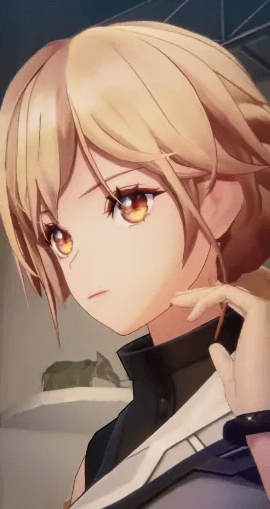
Groza, a Main Character in Girls' Frontline 2: Exilium
SAMG: So how do you intend to tackle this change?
YZ: We would like to take 3D photorealism to its limit. We’ve been preparing for this ever since 2017. We stumbled many times and encountered many pitfalls, and we made many attempts at this, many of which failed. But right now, the 3D performance in our games has reached our expectations, in particular that of GF2.
5: Thinking About The Next Five-Year Plan
SAMG: Sunborn’s “publishing ability” is rarely mentioned. Now that you’re acting as publishers, what concrete requirements or plans do you have in this respect?
YZ: The advantage of being self-published is that the developers can better communicate with the publishers, and we would like to come up with a publishing strategy that best suits our style, as opposed to the traditional approach of just making bids and buying ad space. That is what we need from a publishing strategy.
SAMG: So what’s the proportion of publishing personnel in the company?
YZ: We’re slowly adding more of them. I can’t give you the exact proportion right now, but I’ve been approving a lot of offers for the publishing side. After all, we’ll need a lot of people to support this many projects.
SAMG: GF seems to be very popular overseas. What do you think about making your current games available to a global audience?
YZ: We would like to do synchronized worldwide releases, but for various reasons, we may not be able to fully sync overseas servers with local ones. After our local servers go online, we will attempt to establish overseas servers ASAP, so at the very least the overseas servers should be able to go online at the same time.
SAMG: Do you have any other products that you’re working on besides the four GF IP products that we know about?
YZ: There’s one, but I can’t talk about it right now.
SAMG: As CEO, what goals do you have for Sunborn in the upcoming year?
YZ: Our current objective is definitely to take care of the projects at hand. We want to get them online ASAP and publish them overseas, and that will be the end of the current five-year plan. After that, we’ll be upgrading our company’s organizational structure as our headcount increases. After that, we’ll have to think about the next five-year plan.

